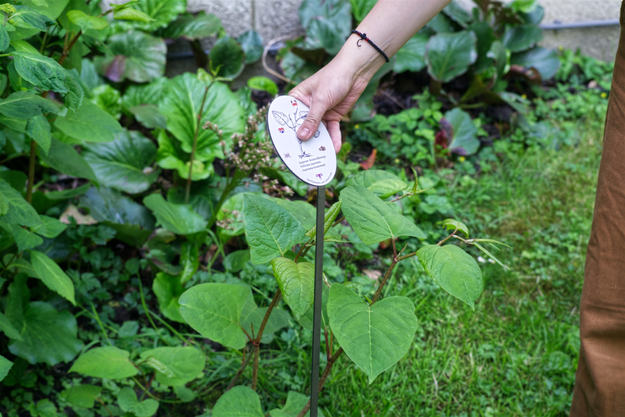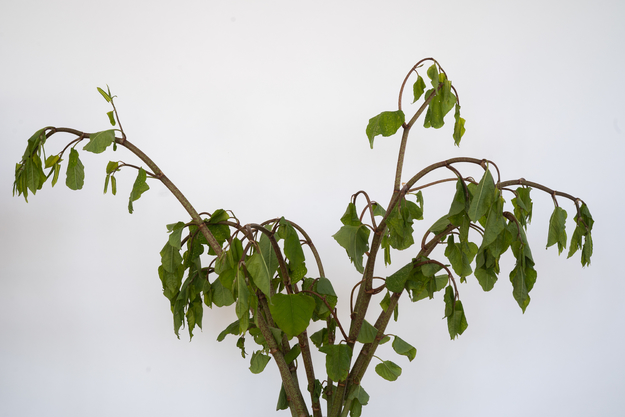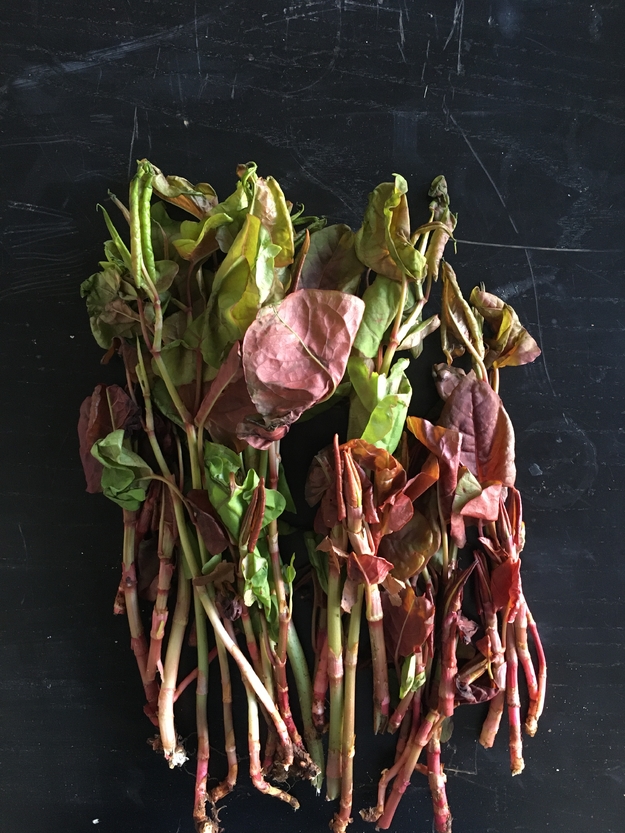Recognize
Once you know what Japanese Knotweed looks like, you will see it everywhere. Its green with pink speckled stems, heart-shaped leaves and pink or white flowers. It can be found in many places around town but not everyone knows how to spot it.
To contribute to the recognition of the city's edible and medicinal flora, Mediamatic has worked on the living exhibition: Hortus Dijkspark Amsterdam. Around our location on the Dijksgracht, we placed signs near plants with information about their medicinal properties. We put special signs indicating the presence and qualities of the Japanese knotweed. Finding the plant is not difficult: the municipality of Amsterdam keeps a map on its website of all locations where Japanese knotweed has been spotted. This map is consistently updated.
Artist and biologist Annemarie Verschoor shares her knowledge about the plant's biological properties during a drawing workshop. Participants are invited to forage a piece of the plant and then draw it as accurately as possible, while Annemarie explains all of the plant's details. This creates a thorough understanding of both the appearance and the biology of the Japanese Knotweed.
Fragrance artist Frank Bloem contributes to the recognition of Japanese Knotweed through the sense of smell.
Foraging
Using poor foraging techniques can enhance the plant's growth, worsening the problem. Yet there are ways to keep the plant under control while enjoying what it has to offer us. Herbalist Lynn Shore and artist Debra Solomon are writing a series of publications on how to properly harvest Japanese knotweed. They are also developing a workshop on how to forage the plant correctly.
Through their project RADIX, the Walden Collective takes visitors on a theatrical journey through a series of radio plays about tracking Japanese knotweed in the wild. Through these theatrical journeys they share information about the history and the foraging of the plant.
Soil quality
There is much concern about the quality of soil in Amsterdam. Some parts of the soil are polluted and there is no consensus on the edibility of the plants growing in the polluted soil. The City of Amsterdam provides information on contaminated areas and the locations of the Japanese knotweed. We combine these maps into an overview of safely consumable plants.
We also investigate whether the polluted soil does affect the edibility of the plants. Our informal partner for this study is Waternet, which has indicated in early discussions that it can provide laboratories and instruments for the research.


